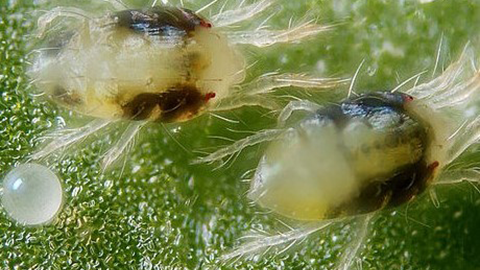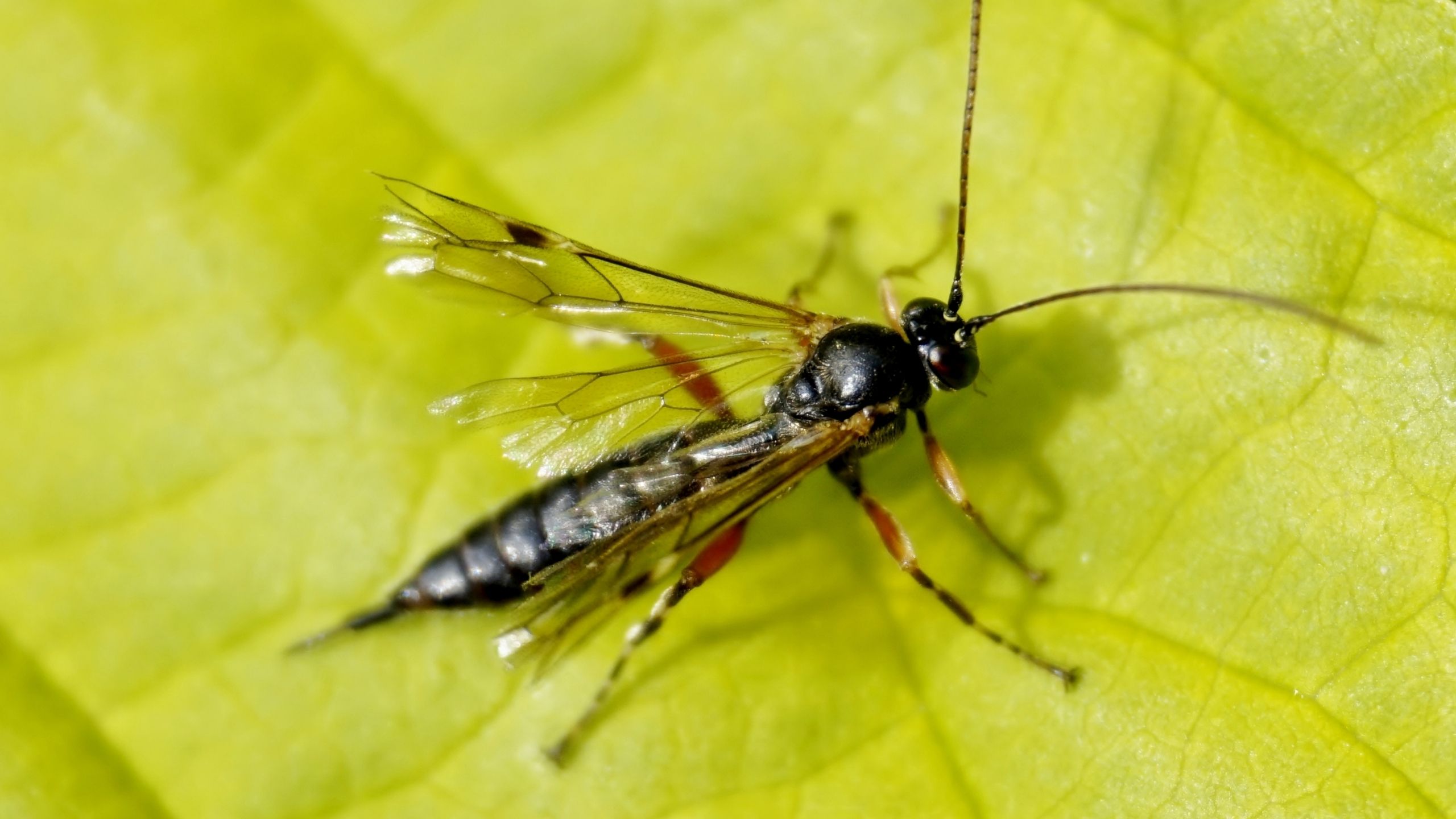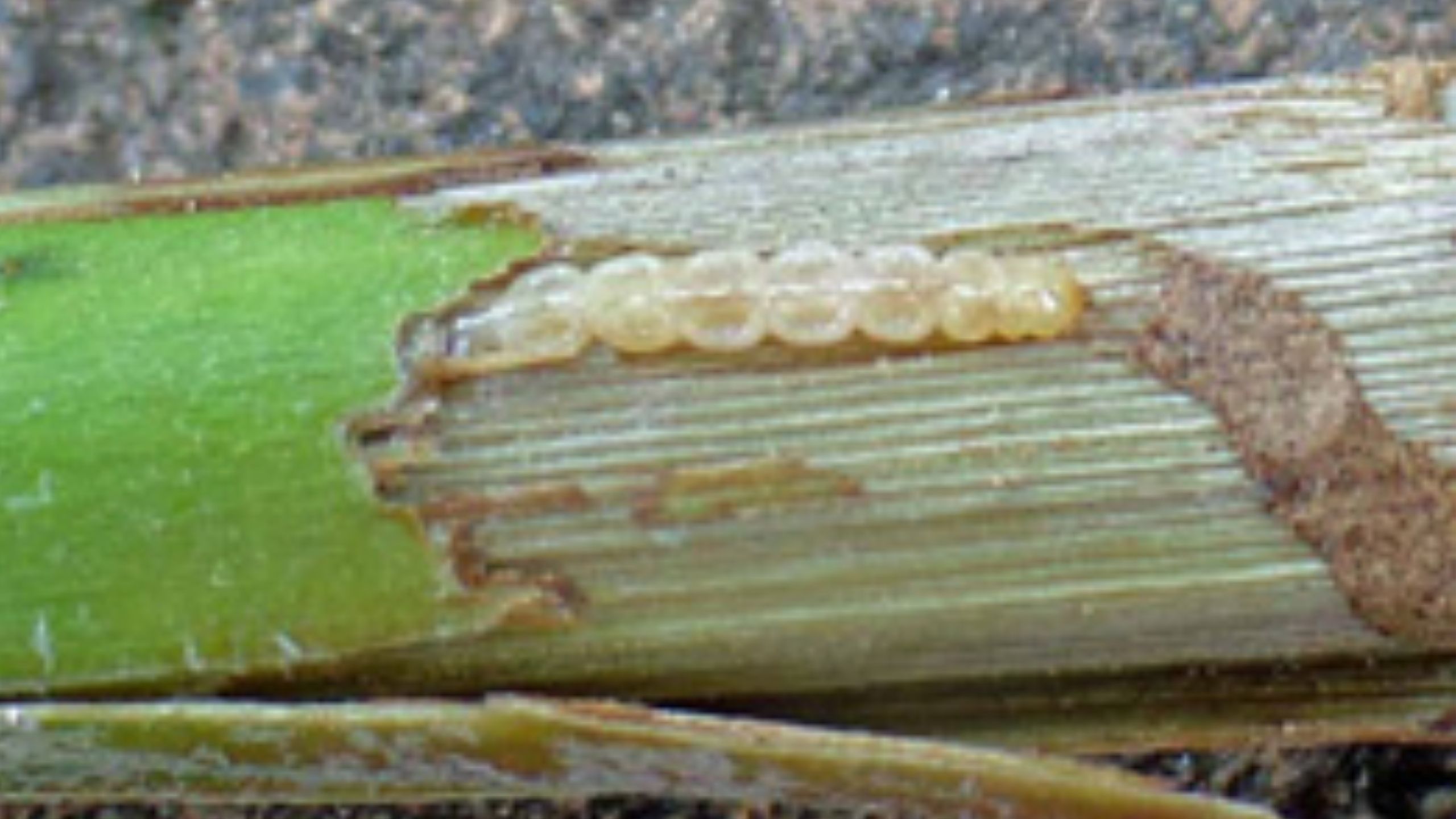Redberry Mite on Blackberry
December 2018
Michael Caron • Sheriden Hansen • Taun Beddes • Ryan Davis (No longer at USU) • Ann Mull (No longer at USU) • Diane Alston (No longer at USU) • Claudia Nischwitz
Quick Facts
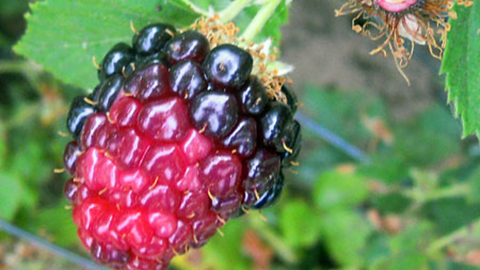
- Redberry mite is a microscopic pest of wild and cultivated blackberries. It was first detected in Utah in 2017 in Davis County.
- Redberry mite injects a toxin as it feeds that causes fruit sections to remain red on an otherwise mature berry.
- “Redberry disease” refers to the symptoms caused by redberry mite.
- Symptoms include persistent red color at harvest time, deformed and hardened drupelets, and distorted flavor. All or only part of the blackberry can be affected.
- Once redberry disease is visible, chemical treatments are ineffective for that season’s crop.
- “Redberry disease” refers to the symptoms caused by redberry mite.
- Redberry mite is not an economic pest of raspberries.
Introduction
Redberry mite (Acalitus essigi) was first diagnosed on blackberry in Davis County, Utah, the summer of 2017. Symptoms included misshapen and discolored drupelets (small fruit sections) that didn’t darken. This diagnosis represents the first detection of redberry mite in Utah. Redberry mites are microscopic, wormlike mites in the Family Eriophyidae, commonly called eriophyid (er·i·o·phy·id) mites. Eriophyidae is a large mite family, including species that cause galls, distortions, bronzing, and fruit russeting on numerous plants. The redberry mite is specific to Rubus plants, and causes damage to wild and cultivated blackberry, especially late-bearing cultivars. Even though this mite is tiny, it’s damage can be severe, reducing fruit quality and marketability. Refer to the USU Extension Fact Sheet Eriophyid Mites – Bud, Blister, Gall, and Rust Mites for more information about eriophyid mites.
Sites at elevations less than 1,300 ft fit a simple quadratic equation using only latitude; however, for higher elevation sites, such as in Utah, a multiple regression model using latitude and elevation was required.
A study was undertaken in Utah’s apple-producing regions to validate the latitude-elevation model, and compare its precision with actual egg hatch and larval entry into fruit, the key life stage targets for insecticide applications.
Pest Description and Life History
Adult redberry mites are approximately 0.1 mm (0.004 inches) long, translucent white and have two pairs of legs (most mites have 3 to 4 pairs of legs). Magnification of 20-30x is required to see the mites. Redberry mites overwinter as adults within buds or under bud scales; they crawl to developing flower buds to feed on developing fruit.
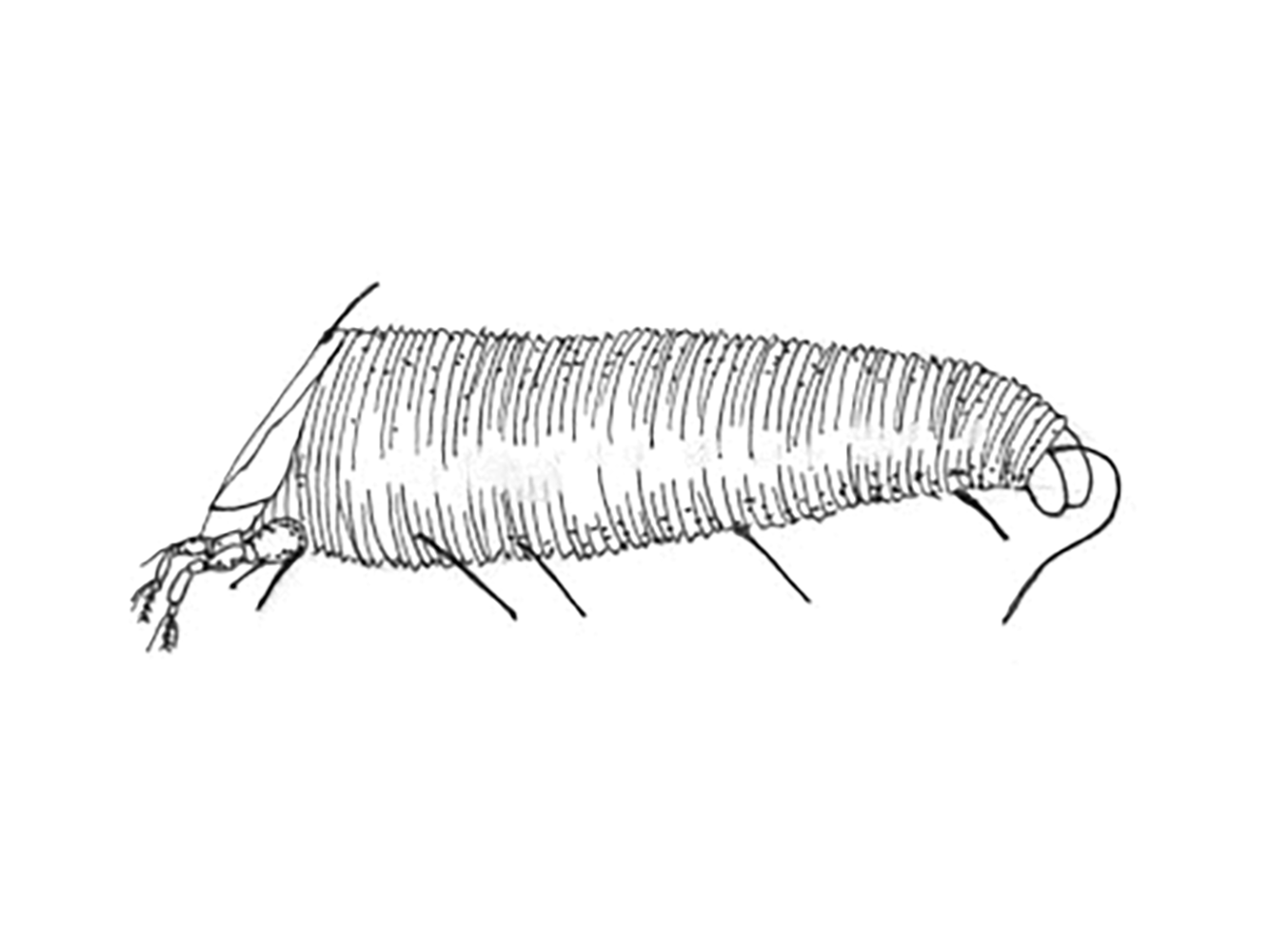
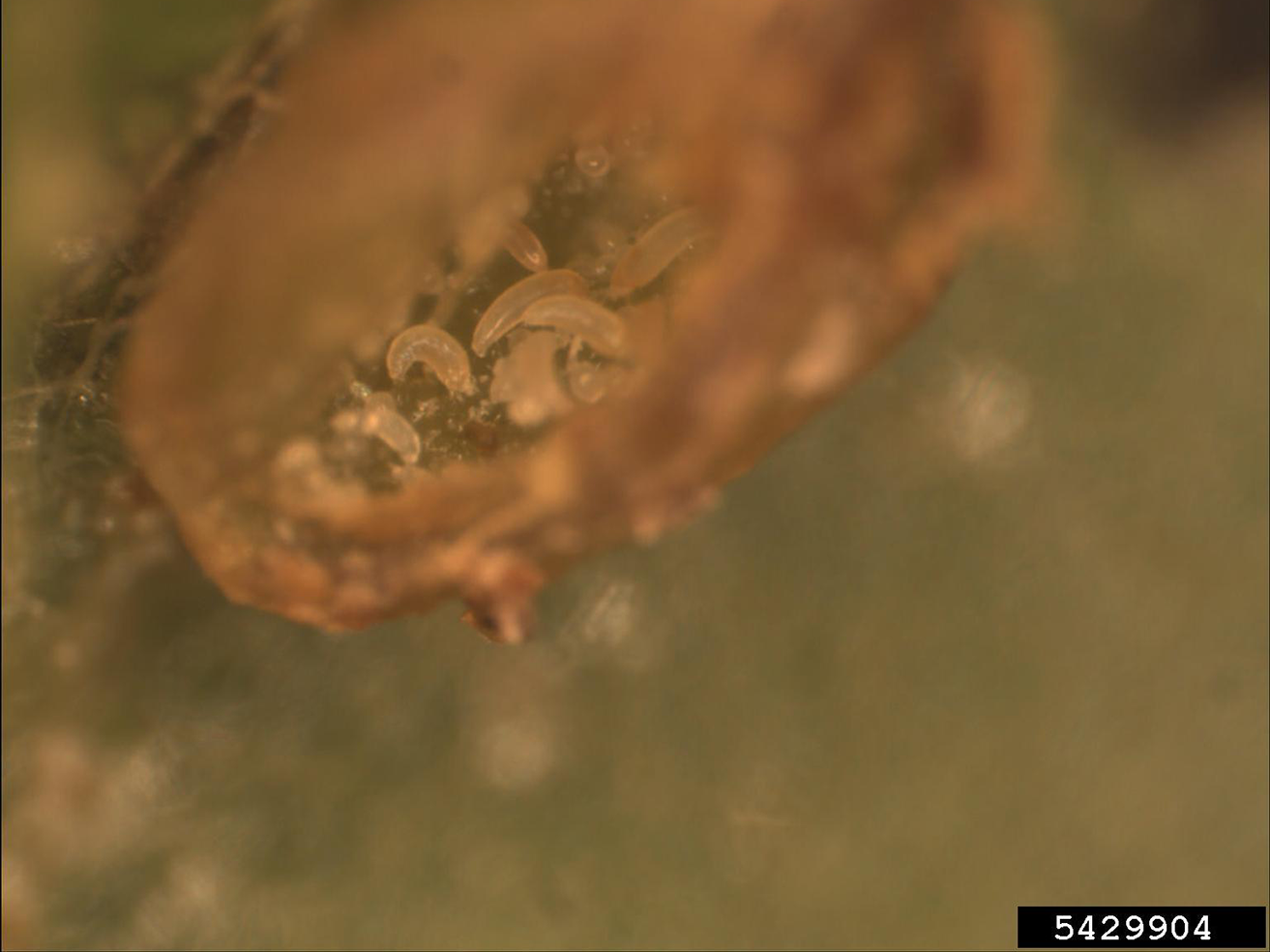
The mites feed at the base of young drupelets migrating to new fruits throughout the summer. Redberry mites can be readily found with magnification by prying apart the drupelets of green to pink berry stages, and closely examining the base of individual drupelets. Mites are not typically found on fully ripe berries – however damage is most noticeable at this stage.
Damage Description
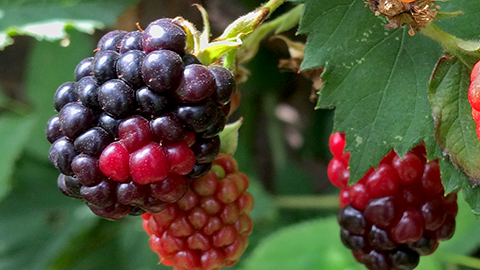
Redberry mites release a toxin while feeding in young fruit. The toxin prevents drupelets from ripening, causing them to remain hard and red instead of softening and turning black. This damage is what gives this mite its common name. Affected drupelets may also remain hard and green. Blackberry cultivars that mature late in the season, such as Apache, Triple Crown, Navajo, Illini Hardy, and Chester, typically experience more damage than earlier maturing cultivars. Redberry mite can cause significant crop loss if not controlled. Mite injury can be confused with sunscald, but sunscald results in white drupelets which eventually dry out, rather than the hard, red drupelets caused by redberry mite.
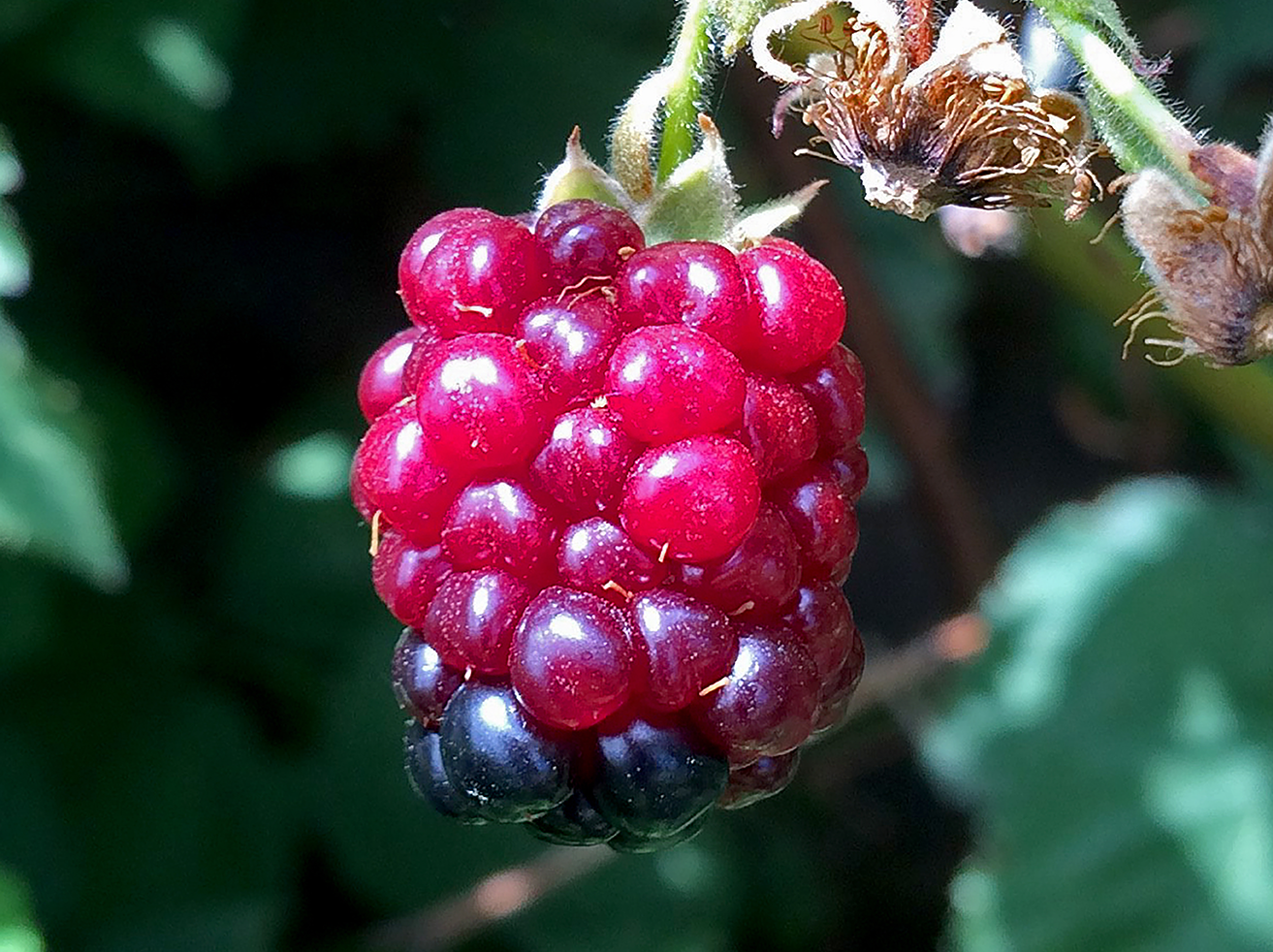
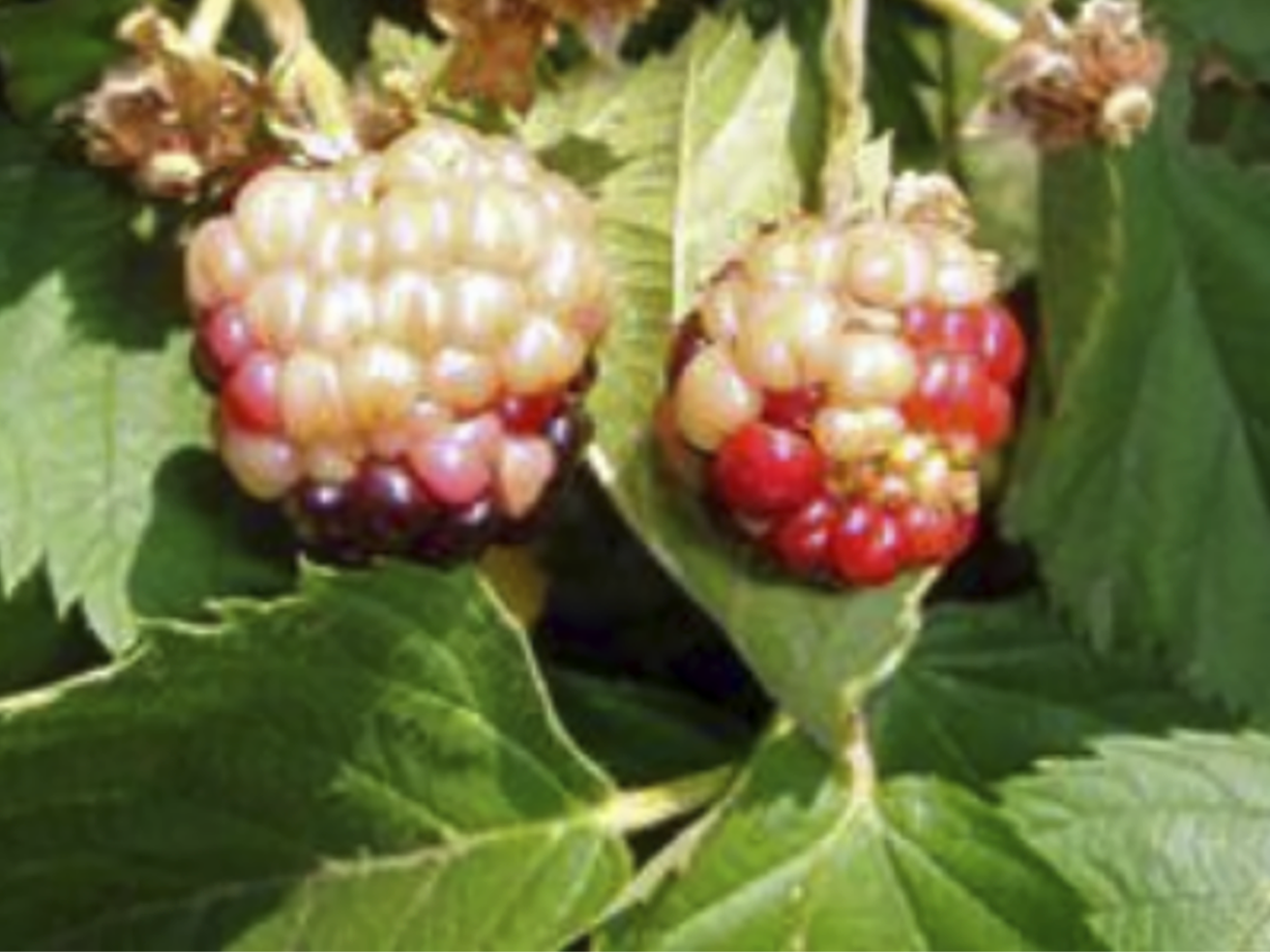
Control
Redberry mite control can be achieved using either wettable sulfur or horticultural oils. Oil and sulfur, or sulfur-containing products (such as some fungicides/miticides) should never be mixed together or applied within 30 days of each other, because of the risk of plant injury (phytotoxicity). Once redberry mite damage is noticed, it is too late to effectively use chemical controls for the current growing season; develop a proactive management plan for the next season.
After buds swell, but before buds open, apply wettable sulfur – consult label for rate and use directions. Apply sulfur again when canes are in full leaf and just before the first flowers open. Wettable sulfur is toxic to bees, so apply before flowers open, and during evening hours (dusk) when flowers are open to allow the sulfur to dry before bee activity resumes the following morning.
Alternatively, when fruit are in green to first pink stage, apply horticultural oil (such as SunSpray or Stylet oil) at a rate of 1-2% by volume. Repeat the oil application every 2 to 3 weeks up to four total applications. As a preventative, thorough coverage is critical to prevent mites feeding deep within the fruit. Blackberry leaves can be sensitive to oil sprays. Apply a test spray on a few plants and observe for injury (leaf scorch or wilting) within 24 hours before making a broader application. Fresh oil residues can be moderately toxic to bees; apply oil at dusk when plants are in bloom.
There is good evidence that using primocane-flowering cultivars, such as ‘Prime Jim’ and ‘Prime Jan’, can greatly reduce damage from redberry mite if the canes are mowed to the ground in the fall. Annual cane removal eliminates overwintering sites and reduces subsequent mite populations.
References
- Black, B., Lindstrom, T., Hunter, B., Olsen, S., Hansen, S., and Maughan, T. 2016. Selecting blackberry cultivars for Utah. Utah State University Extension. Paper 1632.
- Brown, D. 2012. Redberry mite damage to blackberries. Web. 22 Jan. 2018.
- Horticultural Oils. Department of Plant Science and Landscape Architecture, UConn Extension. Web. 23 Jan. 2018.
- Pundt, L. 2015. Horticultural oils. UConn IPM fact sheet. Web. 23 Jan. 2018.
- Murietta, M.E. and M. Gaskell. 2015. Redberry mite population difference in two Rubus spp. on California’s central coast. In proceedings of the XIth International Rubus and Ribes Symposium 21-24 June, 2015. Web 25 Jan. 2018.
- Oregon State University. 2017. Cane fruit – Redberry mite. Pacific Northwest Insect Management Handbook. Web 14 Feb 2018.
- Pye, D.R.L., and E. De Lillo. 2010. A review of the eriophyoid mites (Acari: Eriophyoidea) on Rubus spp. In Britain, with a new species (Diptilomiopidae) and two new records. Zootaxa 2677:15-26.
- UC Pest Management Guidelines – Caneberries – Redberry Mite. Web 22 Jan. 2018.
- University of California Agriculture and Natural Resources. 2015. UC pest management guidelines; caneberries; red mite. Web 22 Jan. 2018.
Related Research


